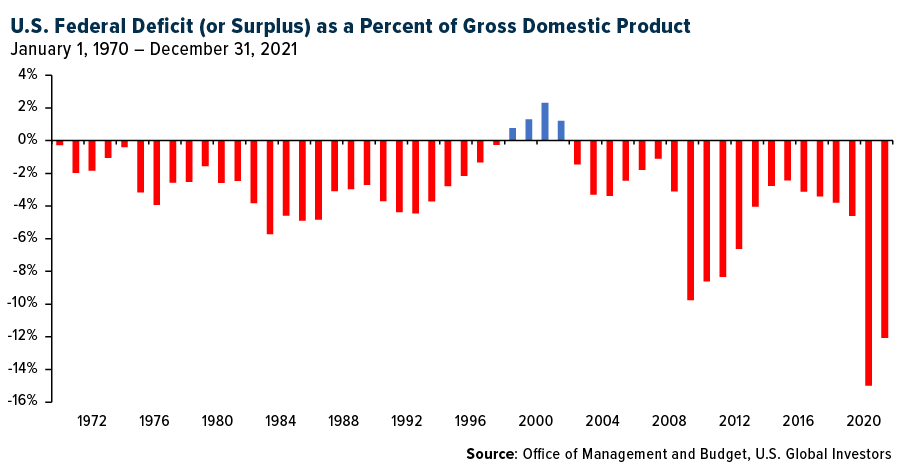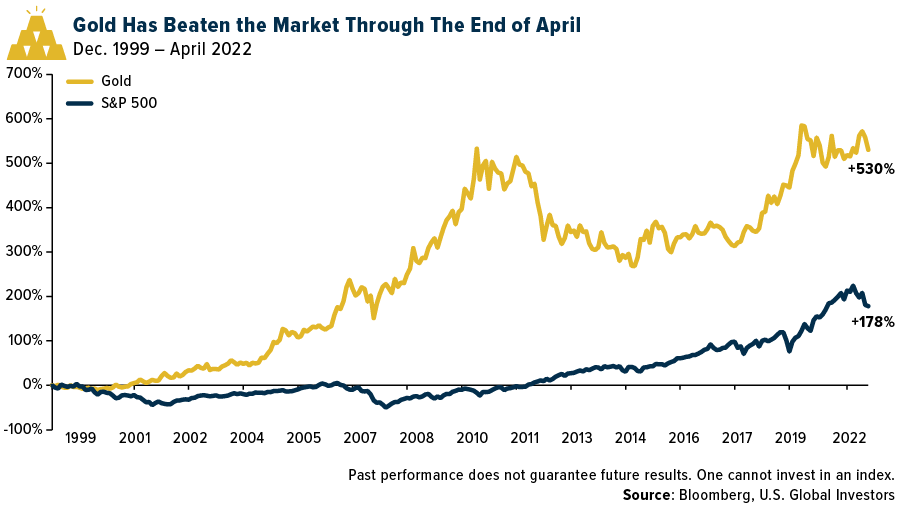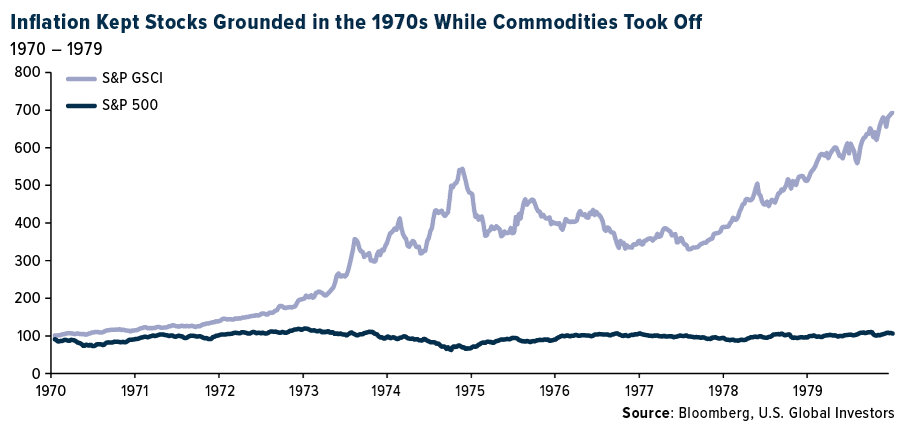Inflation continues to hover above an annual rate of 8%, with prices for gasoline, natural gas, food and used vehicles rising the most. The last time inflation was this high, Ronald Reagan was only a year into his first term, and the headline interest rate was around 13%, compared to 1% today.
Forty years ago, the U.S. was experiencing some of the highest inflation in the country’s history after a decade of global oil supply shocks, easy monetary policy and expanding government borrowing. The convertibility of the dollar into gold had recently been suspended, and this had the immediate effect of devaluing the greenback.
There are key differences between then and now—unemployment was alarmingly high in the 1970s and early 80s, for instance—but there are also a few obvious parallels. Today we’re facing our own global supply chain disruptions, for everything from food to energy, largely as a result of the war in Eastern Europe and ongoing Covid lockdowns. A shortage of semiconductor chips has slowed the manufacture of new automobiles, appliances, data centers and more.
Even though the Federal Reserve has begun raising rates in a new tightening cycle, monetary policy remains extremely accommodative on a historical basis. Combined with trillions of dollars in pandemic-related stimulus, this has served as rocket fuel for corporate borrowing and household debt, both of which stand at all-time highs. For the first time ever, the federal government now owes over $30 trillion, or nearly 130% of the U.S. economy.
The truth is, officials are much more comfortable with large deficits today than they were in the 1970s, and that’s all thanks to modern monetary theory, or MMT. Advocates of MMT believe that deficit spending is perfectly fine since the government can just issue more of its own currency to pay for it all. And thus, the cycle continues.

Gold Was the Number One Asset Of The 1970s
So, what can investors do?
Again, history is a valuable guide. One of the best assets to own in the 1970s was gold, which went from $35 an ounce at the beginning of the decade to as high as $850 by 1980. Investors sought a hard asset that could go toe-to-toe with inflation and hopefully hold its value over time, and the yellow metal fit the bill. Unlike fiat currency, which policymakers can create more of out of thin air, gold requires incredible amounts of time, energy, and money to produce. This helps keep its supply in check.
But does the thesis still hold up?
Well, consider this: From December 1999 through the end of April 2022, gold has outperformed the S&P 500 by a factor of three. Even though past performance is no guarantee of future results…that’s not bad for a “barbarous relic” that generates no income.

Granted, if we compare gold to the market over the past 10 years, the metal has significantly outperformed as stocks rallied in the longest bull market in history, fueled by low interest rates and low inflation.
That said, the S&P 500 has traded down in 2022 on inflation risk and concerns the Fed will raise borrowing costs much faster than initially anticipated. Gold has appeared to be the better asset, then, delivering a positive return in the first four months of the year.
Commodities Were Also A Profitable Bet
Even if physical gold is not hitting new highs, its resilience in the face of runaway inflation tells us that what the market seems to favor right now are hard assets that have intrinsic value. It’s little wonder, then, that prices for nearly every commodity—from metals to energy to agriculture—appear to be going parabolic in many cases.
We saw the same thing happen in the 1970s. The S&P GSCI, which tracks a basket of commodities, surged sevenfold during the decade, while the S&P 500 remained mostly flat.

With commodity prices doing so well right now, we believe energy producers and metal miners look attractive by extension. Many oil and gas companies posted head-turning results in the first quarter of 2022, which was reflected in higher share prices.
Inflation may not be as “transitory” as the Fed maintained early on, but at some point, prices will stabilize. Until then, it’s important for investors not to make rash decisions and panic-sell at a loss. If nothing else, it may be prudent simply to hold your positions for a longer duration than you were planning. This isn’t the first spate of inflation we’ve seen, and it likely won’t be the last.
Interested in gaining exposure to gold miners? Consider the U.S. Global GO GOLD and Precious Metal Miners ETF (GOAU), by clicking here!
All opinions expressed and data provided are subject to change without notice. Some of these opinions may not be appropriate to every investor.
Please carefully consider a fund’s investment objectives, risks, charges, and expenses. For this and other important information, obtain a statutory and summary prospectus for GOAU here. Read it carefully before investing.
Investing involves risk, including the possible loss of principal. Shares of any ETF are bought and sold at market price (not NAV), may trade at a discount or premium to NAV and are not individually redeemed from the funds. Brokerage commissions will reduce returns.
Because the funds concentrate their investments in specific industries, the funds may be subject to greater risks and fluctuations than a portfolio representing a broader range of industries. The funds are non-diversified, meaning they may concentrate more of their assets in a smaller number of issuers than diversified funds. The funds invest in foreign securities which involve greater volatility and political, economic and currency risks and differences in accounting methods. These risks are greater for investments in emerging markets. The funds may invest in the securities of smaller-capitalization companies, which may be more volatile than funds that invest in larger, more established companies.
The performance of the funds may diverge from that of the index. Because the funds may employ a representative sampling strategy and may also invest in securities that are not included in the index, the funds may experience tracking error to a greater extent than funds that seek to replicate an index.
The funds are not actively managed and may be affected by a general decline in market segments related to the index. Gold, precious metals, and precious minerals funds may be susceptible to adverse economic, political, or regulatory developments due to concentrating in a single theme. The prices of gold, precious metals, and precious minerals are subject to substantial price fluctuations over short periods of time and may be affected by unpredicted international monetary and political policies. We suggest investing no more than 5% to 10% of your portfolio in these sectors.
Fund holdings and allocations are subject to change at any time. Click to view fund holdings for GOAU.
Distributed by Quasar Distributors, LLC. U.S. Global Investors is the investment adviser to GOAU.
The S&P 500 Stock Index is a widely recognized capitalization-weighted index of 500 common stock prices in U.S. companies. The S&P GSCI serves as a benchmark for investment in the commodity markets and as a measure of commodity performance over time. It is a tradable index that is readily available to market participants of the Chicago Mercantile Exchange.
